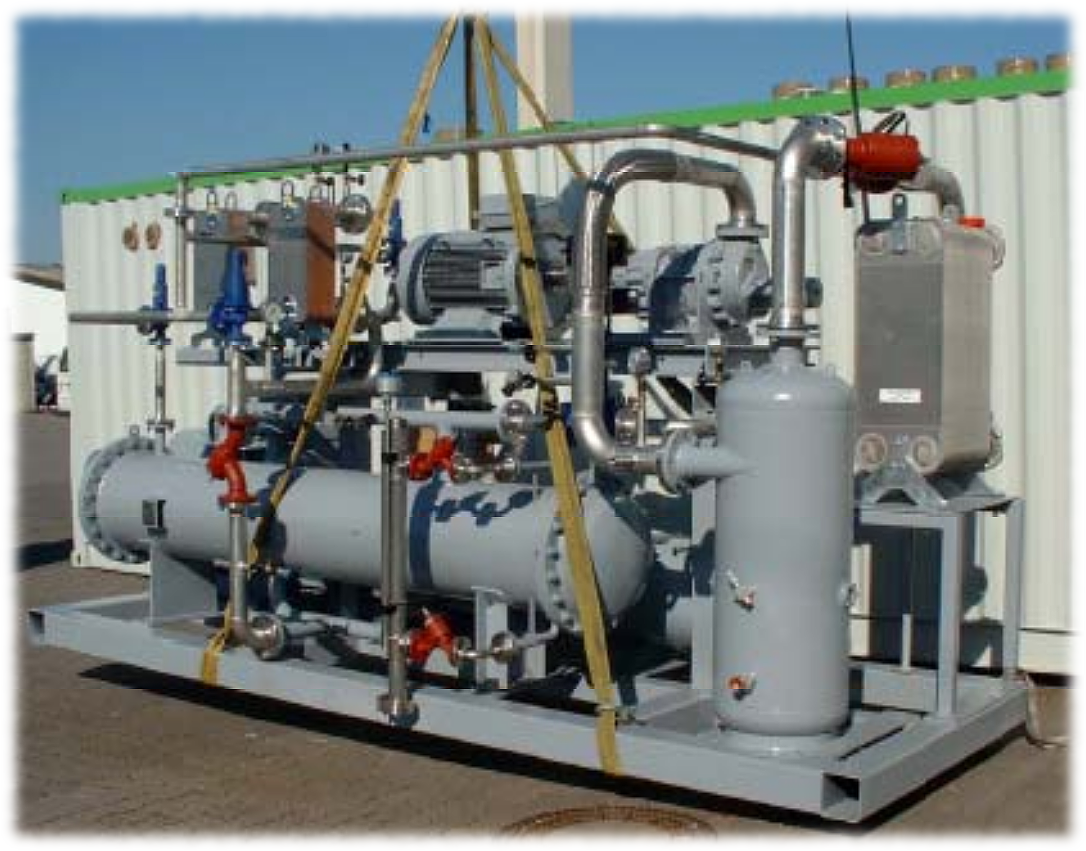The organic fluid engine is a thermally driven machine that continuously converts thermal into mechanical energy (or electricity). It is especially suitable for renewable energy sources, like geothermal reservoirs, solar radiation, biomass fuel, waste heat, and ocean thermal energy conversion.


What is an ORC power system?
Organic Rankine Cycle (ORC) power systems are an efficient and reliable option for the generation of electricity in the small to medium power range (from few kWe up to tens of MWe). They are especially suitable for waste-heat to power and renewable energy sources like solar radiation, biomass thermal conversion, geothermal heat exploitation. A very promising application is waste heat recovery from mobile engines (internal combustion engines, gas turbines, etc) on board of trucks, ships, trains, and aircraft.
Applications
ORC power systems are useful for the conversion into mechanical or electrical power of several, mainly renewable, energy sources, like:
- geothermal reservoirs
- biomass combustion or gasification
- concentrated solar radiation
- industrial waste heat
- waste heat from reciprocating engines and gas turbines
Installations
ORC power systems are useful for the conversion into mechanical or electrical power of several, mainly renewable, energy sources, like:
- geothermal reservoirs
- biomass combustion or gasification
- concentrated solar radiation
- industrial waste heat
- waste heat from reciprocating engines and gas turbines
Advantages
The use of an organic fluid allows for the achievement of high isentropic efficiency in the turbine, which would not be possible for such a low power output, if steam were the process medium. Economic and technological constraints often dictate a small optimal power output, if the primary energy source is fully sustainable, i.e., biomass, solar radiation, geothermal heat, or heat recovered from industrial processes. In all these cases ORC technology is effective and cost-competitive.
History
William J.M. Rankine developed a complete theory of the steam engine in his famous manual of 1859. However, as early as 1825–1826 Thomas Howard built an engine using “alcohol” or “ether” as working fluid. Various authors refer to it and provide a description. It appears that the engine, with a design power of 24 hp (about 18 kW), worked for a brief period in Rotherhithe, Surrey, UK.
Research trends
The rising industrial interest and the growing and lively international scientific community researching the ORC technologies are opening up new possibilities for the future ORC power systems. The figure below shows the traditional range in which ORC power systems are the most suitable technology from a techno-economic point of view. It is worthwhile to not that the boundaries of this operating map are expanding. On one side, larger installations in term of power production are already feasible and competitive from an industrial point of view. On the other side the research is very lively in the field of small scale ORC (<100kW). The low-capacity market has large potential, especially for mass-production units.
Fluid dynamics in ORC applications
The gasdynamics of a fluid operating in a thermodynamic region near to or overlapping liquid-vapour equilibrium, as it is the case in Organic Rankine Cycle applications, may significantly differ from that of dilute gases under both a qualitative and quantitative point of view.
